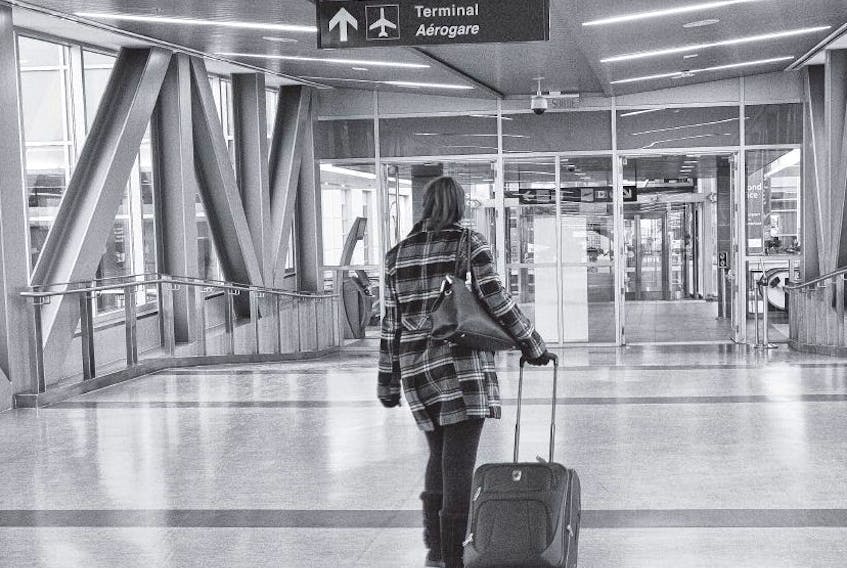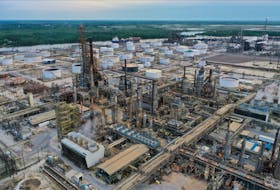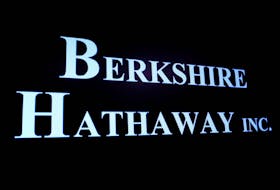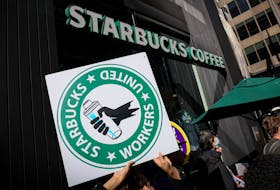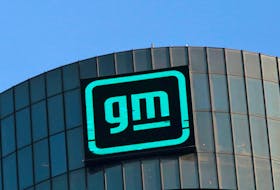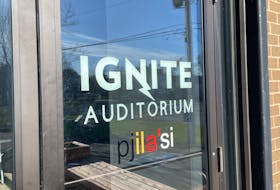The wind beneath Christopher Ball’s wings is not sustained by airport improvement fees.
“Airports are all charging airport improvement fees (AIF) because they can,” said Ball, a frequent flyer from Mahone Bay who spends a good deal of his time these days in Toronto. “It is time to put a stop to this.”
Returning to Halifax from Toronto in early January, Ball saw a poster in the Halifax Stanfield airport alerting passengers to an increase in the airport’s AIF from $25 per ticket to $28, effective Jan. 1.
“Toronto started it and then all the other airports said, ‘Oh, this is a good way to make money,’” Ball said, adding that all of the fees were initially introduced as temporary measures. Instead, the fees endured and increased incrementally over the years, he said.
Theresa Rath Spicer, public affairs director for the Halifax International Airport Authority (HIAA), said the airport implemented an AIF of $10 in 2001.
“It was one of the last major airports to implement an AIF,” Rath Spicer said. “It was established to partially fund the 2001-2010 capital improvement program and its ongoing need beyond 2010 was not yet determined,” Rath Spicer said. “As the scope of the capital investment increased beyond initial expectations, it became necessary for HIAA, like other Canadian airport authorities, to continue with an AIF to finance our ongoing capital improvement program for the foreseeable future: to maintain and enhance infrastructure to meet the needs of our passengers, airline partners, tenants and the community; and continue to be a significant economic engine for our city and province.”
Ball said the improvement fee supports unnecessary upgrades at the Halifax airport.
“You look at the volume of people going throughthat airport, the parking garage is half empty, all that huge network of roads, which was unnecessary,” Ball said. “The roads that were there before were fine. Inside, they’ve done some nice decorations but they haven’t really done anything significant to change the way the airport works. They’ve added vendors but then they get money from the vendors.
“If they didn’t have the money, I don’t think they would need to spend it.”
Rath Spicer said the January increase in the improvement fee, the first in five years at the Halifax airport, is offset by a decrease in the AIF for passengers departing for Sydney from $25 to $15. She said the overall increase is expected to generate $4.1 million in additional revenue.
“This additional revenue will be used to fund necessary infrastructure improvements at Halifax Stanfield,” Rath Spicer said. “Like other airports across Canada, the AIF is used to support ongoing airport improvement initiatives, as part of a comprehensive capital plan. . . . HIAA does not have shareholders and reinvests 100 per cent of any annual surplus back into the airport.”
More than 60 airports in Canada have implemented improvement fees. The fee at the Halifax airport is added to the cost of departing tickets.
“The fee is paid by departing passengers, only about 38 per cent of all the passengers served at Halifax Stanfield,” Rath Spicer said. “Neither arriving nor connecting passengers at HalifaxStanfield pay a fee. Halifax passengers connecting through other Canadian airports also do not pay a fee to those airports if the connection is less than four hours, with the exception of Greater Toronto Airports Authority, which charges a marginal connecting AIF.”
The $28 fee to depart the Halifax airport is among the most expensive in the country. Airports in Edmonton and Calgary charge a $30 improvement fee. At Pearson in Toronto, it’s $25 for departing passengers and $4 for connecting flights. The Ottawa airport improvement fee is $24, while airports in Vancouver and Fredericton charge $20. The Fredericton airport calls its toll a passenger facility fee.
Ball said airports receive huge landing fees from airlines. He said the improvement fee is just a further drag on passengers’ finances, adding to payments for security, navigation systems, airport parking and airline fees like checking baggage and preferred seating. “Airports are effective monopolism; you cannot just go to the competition when flying out of any city because the closest airport is hours away,” he said.
But Rath Spicer said major Canadian airports like Halifax Stanfield have only three primary sources of capital funding — reinvestment of operating surpluses, borrowing and the AIF.
“Like other airports, HIAA uses all three,” she said.
Ball said it’s time to rein in the improvement fees.
“If it was announced as temporary, then there should be an end date, or maybe the (federal) minister of transport should put a limit on them so they don’t just keep going up until they are $50 or $60 or $70 some day. Put a cap on it.”

